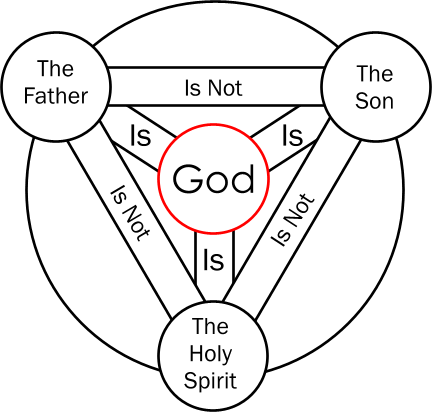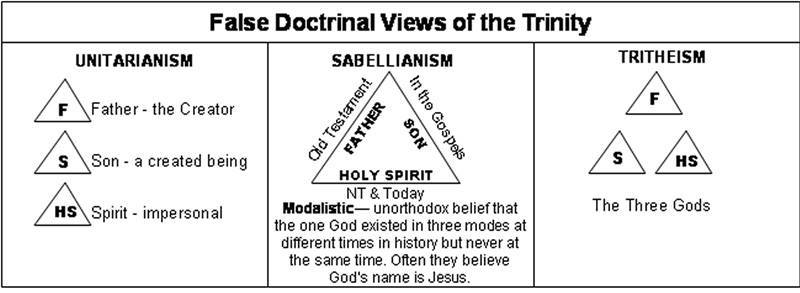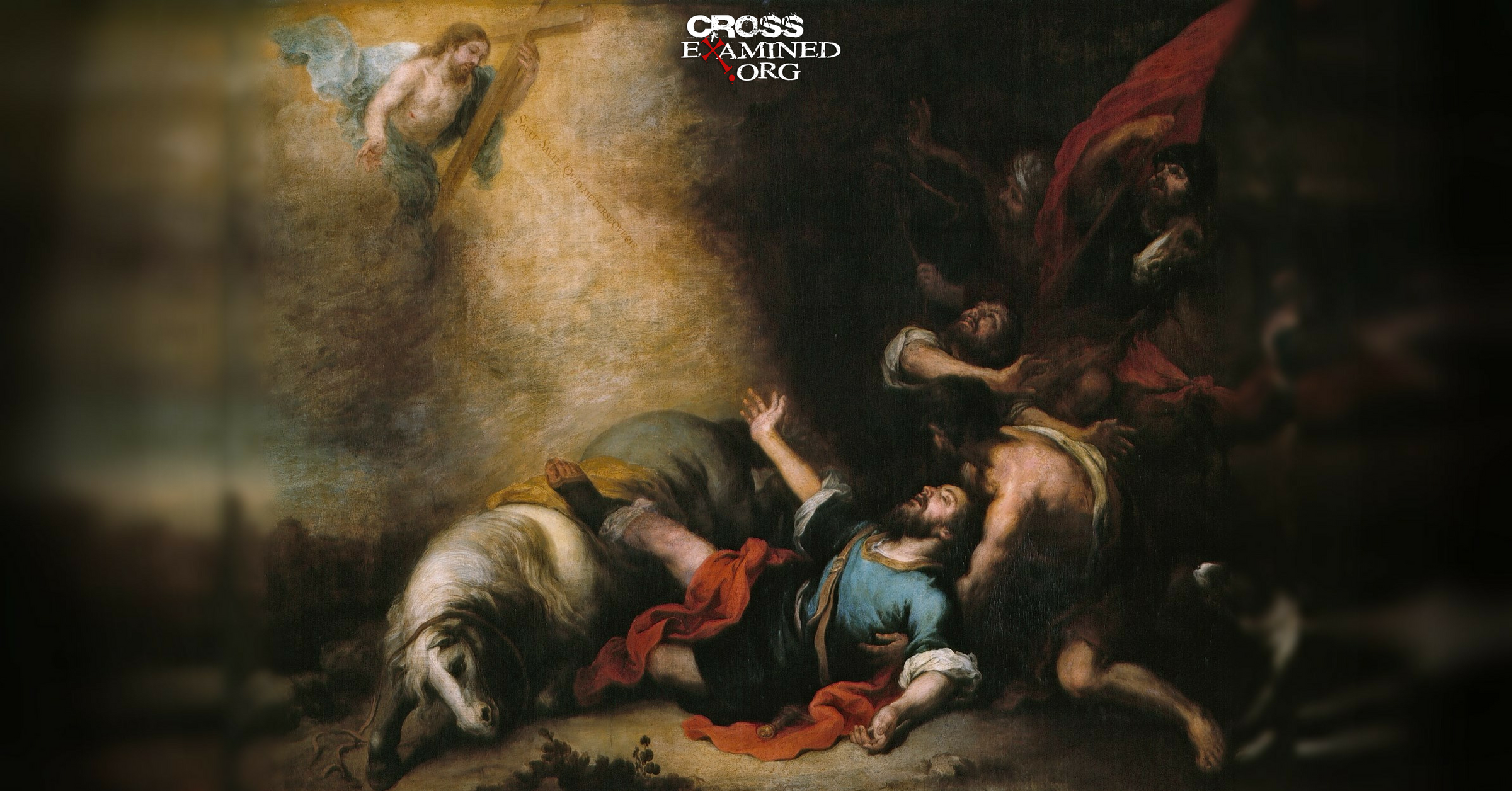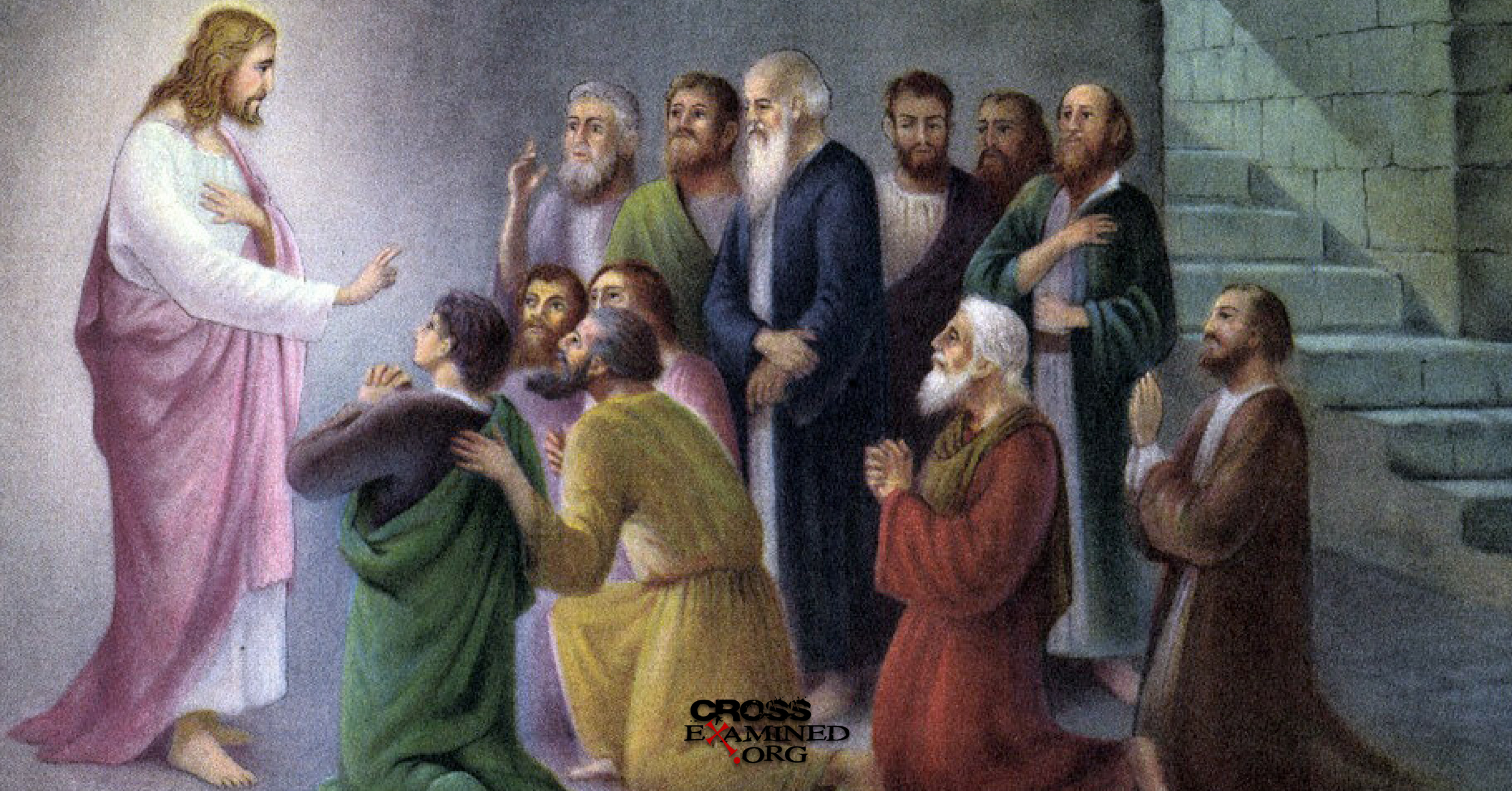This is part 8 in a blog post series on the historical evidence for Jesus’ resurrection. In parts 3, 4, 5, and 6 of this series, we’ve seen powerful historical evidence that (1) Jesus died by Roman crucifixion, that (2) His tomb was found empty the following Sunday morning, that (3) the twelve disciples believed they saw Jesus alive after His death, that (4) a church persecutor named Paul converted to Christianity on the basis of what he perceived to be an appearance of the risen Jesus, and (5) a skeptic named James converted to Christianity on the basis of what he perceived to be appearance of the risen Jesus.
In part 7, we looked at various ways that skeptics have tried to account for the minimal facts, and we saw that they all fail. No naturalistic theory can account for all 5 of the minimal facts. The only theory that can account for them is not a naturalistic theory at all, but a supernaturalistic theory: God raised Jesus from the dead. The hypothesis that God The Father miraculous raised Jesus to life explains all of the data perfectly. It explains why Jesus’ tomb was found empty, why His disciples (and Mary Magdalene) believed they saw Him alive after His death. It explains why a hard-headed, hard-hearted terrorist like Saul of Tarsus would become one of the people he sought to destroy virtually overnight, and it would explain why James, despite being skeptical of his brother’s claims, would become such a firm believer that he would be willing to die a martyr’s death. The resurrection explains every piece of data that is in need of explanation, but even the best of the naturalistic theories could explain one of the five facts at most. The majority didn’t even explain that many. The “He Is Risen” hypothesis has exhaustive explanatory scope and power and ergo outshines any other proposed explanation.
So Why Do People Still Deny It?
In fact, In a lecture titled “Evidence For The Minimal Facts” given on October 14th, 2017 at The National Conference On Christian Apologetics in Charlotte, North Carolina,[1] Dr. Gary Habermas said that in scholarship today, the vast majority of non-Christian historians affirm the 5 minimal facts as true, and they also will admit that they can come up with no naturalistic explanation to account for them. Their attitude can basically be summed up in this sentence: “We admit these 5 facts are true, and we admit that we cannot come up with a good alternative to explain them, but we will not conclude that Jesus rose from the dead.”
Why is that? If you have an empty tomb, and various people claiming and believing that they saw Jesus alive after his death, and every single naturalistic theory that can be posed is an abject failure, why would you not conclude that the best explanation is that Jesus rose from the dead? I mean, it has the ability to explain all of the data, it meets C.B Mcullah’s 6 tests for being a good historical theory[2], why would you just dig in your heels and say “I don’t know how to account for this data, but I know Jesus didn’t rise from the dead”?
*It’s A Heart Issue, Not A Head Issue
Well, one reason could be what I said in Part 1 of this series; namely that this is not merely a matter of whether the evidence is sufficient, this is a moral and/or emotional issue for them. As I point out in my blog post “What Is The Significance Of Jesus’ Resurrection”, if Jesus rose from the dead, the entire Christian worldview is vindicated. For some non-Christians (scholars and laypeople alike), they just don’t want Christianity to be true. If Christianity is true, then they know that they’ll either have to change the way they’re living so they can have a nice afterlife or else face God’s judgment for living in rebellion against him. Atheism is a crutch for these people; if they can make themselves believe there’s no God, then they can live however they want and not have to worry. If there’s no God, there’s no soul. If there’s no soul, there’s no afterlife. If there’s no afterlife, there’s no Hell. If there’s no Hell, then they can sin, sin, sin away and have a perfectly clear conscience about it. It may also be that they had family or friends die who weren’t Christians, and they know that if Christianity is true, those people are in Hell now, so it’s more comforting for these people to just continue believing it isn’t true.[3]
Read this candid statement from a famous atheist, for example:
“[A fear of religion] has large and often pernicious consequences for modern intellectual life. […] I speak from experience, being strongly subject to this fear myself: I want atheism to be true and am made uneasy by the fact… that some of the most intelligent and well-informed people I know are religious believers. It isn’t just that I don’t believe in God and, naturally, hope that I’m right in my belief. It’s that I hope there is no God! I don’t want there to be a God; I don’t want the universe to be like that.” – Thomas Nagel[4]
Of course, this applies to atheists and agnostics. For other non-Christians, like Muslims or Mormons, their non-intellectual aversion is slightly different. Ask any Christian who has been converted out of Islam and he or she will tell you that it’s hard. Your family turns your back on you, perhaps they’ll try to murder you in an honor killing, your friends will leave you, every loved one you had who was also a Muslim will shun you and maybe even try to kill you.
Let me just quickly say something to those of you who may fall into the above category; having a relationship with Jesus Christ is worth more than anything you could ever have in this world. The apostle Paul, who, as we saw in part 6, endured severe hardships for being a Christian, wrote; “But whatever were gains to me I now consider loss for the sake of Christ. What is more, I consider everything a loss because of the surpassing worth of knowing Christ Jesus my Lord, for whose sake I have lost all things. I consider them garbage that I may gain Christ.” (Philippians 3:7-8). According to Paul, having a relationship with Jesus Christ is worth so much, that everything else is garbage by comparison! Nabeel Qureshi, whose family turned his back on him when he converted to Christianity wrote; “All suffering is worth it to follow Jesus. He is that amazing.”[5]
Speaking as a Christian myself, I wholeheartedly agree with Paul’s and Nabeel’s statements. My relationship with God means more to me than anything this world has to offer.
*Unanswered Questions May Linger
Of course, for others, it may be the case that unanswered questions still linger. Some readers may be thinking “Gosh, there sure is a lot of evidence for Jesus’ resurrection, but I still have unanswered questions. Why didn’t Jesus appear to any of His enemies after He rose, such as Pontius Pilate or Caiaphas? This would have convinced them that they were wrong to crucify Him, they would repent and become Christians? Also, why is it that Mark’s gospel records no appearances? If Mark’s gospel is the earliest gospel as most scholars say, does this imply that the appearances were legendary embellishments? I don’t think I can commit my life to Christ when there are still so many answered questions.”
Dealing With Unanswered Questions
First of all, you shouldn’t need to have all of your questions answered before you can make a decision for Christ. We will never have every question answered in this life. What you should do is weigh the evidence. Imagine a scale with the evidence for Jesus’ resurrection on one side and your unanswered questions on the other. Does the totality of the evidence tip in favor of Jesus’ resurrection? If so, then you should conclude that Jesus rose from the dead, despite there being a few unsolved mysteries about it. Would your question, if left unanswered, affect the weight of the arguments in any way? If not, then you should be comfortable with it being left unanswered.
- Warner Wallace, cold case homicide detective, and Christian Apologist said this about unanswered questions:
“After a long career as a cold-case detective, I’ve learned to get comfortable with unanswered questions. In fact, I’ve never investigated or presented a case to a jury that wasn’t plagued with a number of mysteries. As much as I wish it wasn’t so, there is no such thing as a perfect case; every case has unanswered questions. In fact, when we seat a jury for a criminal trial, we often ask the prospective jurors if they are going to be comfortable making a decision without complete information. If potential jurors can’t envision themselves making a decision unless they can remove every possible doubt (and answer every possible question), we’ll do our best to make sure they don’t serve on our panel. Every case is imperfect; there are no cases devoid of unanswered questions. Every juror is asked to make a decision, even though the evidential case will be less than complete. As detectives and prosecutors, we do our best to be thorough and present enough evidence so jurors can arrive at the most reasonable inference. But, if you need ‘beyond a possible doubt,’ rather than ‘beyond a reasonable doubt,’ you’re not ready to sit on a jury. The standard of proof is ‘beyond a reasonable doubt’ for a good reason; no case is evidentially complete; no case maker can eliminate every possible reservation.”[6]
I think the evidence is sufficient to warrant the conclusion that Jesus rose from the dead and Christianity is true, even in spite of some unanswered questions. Think about it for a moment; would the absence of an answer as to why Jesus’ didn’t appear to Pilate and the Pharisees undermine the powerful historical evidence that He did appear to the disciples, Paul, and James? How would an inability to answer that question undermine the evidence for those 3 minimal facts? Would it undermine the evidence for the empty tomb? Would it mean that the resurrection isn’t the best explanation for the 5 minimal facts? Certainly not. I think we could say “Why didn’t He appear to his enemies? It’s kind of weird that he didn’t do that. But the evidence that he did appear to the disciples, Paul, and James is strong enough, and since no naturalistic theory can account for them, I’m still justified in concluding that Jesus rose from the dead.”
Answering The Unanswered Questions
But do answers to these questions exist? I think they do. Let me take the time address these one by one.
Question 1: Why Didn’t Jesus Appear To Pilate And The Pharisees?
This is a common question that skeptics and believer alike have asked. If Jesus really rose from the dead, then why didn’t he appear to Pontius Pilate, the Pharisees, and all who doubted him? Surely He would have done this for scripture teaches that God wants all people to be saved (2 Peter 3:9, 1 Timothy 2:4) and that Christ died for the entire world (John 3:16, 1 John 2:2), and that confession of Jesus’ lordship and in His resurrection are requirements for salvation (Romans 10:9), so then why didn’t Jesus appear to Pilate and the Pharisees so that they could believe in Him so that they could be saved? I propose several answers.
1: Who Says He Didn’t Appear To Them?
This is often overlooked, but there’s a passage in the book of Acts that suggests that Jesus did appear to at least a few of the religious leaders, resulting in their conversions. Acts 6:7 says “So the word of God spread. The number of disciples in Jerusalem increased rapidly, and a large number of priests became obedient to the faith.” (Emphasis mine). Now, granted, it could be that these might not be the same Pharisees who were constantly trying to trip him up and voted to condemn him to death, but they could be. It’s possible that some of the people who ridiculed Jesus, opposed him throughout his ministry, and voted for his death were among the 500 individuals whom Jesus appeared to in 1 Corinthians 15, and that these are the priests Acts 6:7 referred to. So, while this verse isn’t irrefutable proof that Jesus appeared to those who opposed him throughout his ministry, it does at least open to the door.
2: It’s Possible That It May Have Done No Good
If the skeptics of today are any indication, it doesn’t matter how good the evidence is; they will always find a way to avoid following it where it leads. People who don’t want to believe something, won’t believe it, no matter how strong the evidence is. It could have been the case that had Jesus appeared to Caiaphas; he would have said that Satan was trying to deceive him. After all, the religious leaders appealed to demonic forces to try to explain away his other miracles, like his exorcism in Mark 3:20-30, for example. Pilate might have explained his appearance away as a hallucination or a vision, and blamed it on a guilty conscience. Only God knows how these people would have responded to a postmortem appearance of Jesus. If it would have done no good, then Jesus would have just been wasting his time appearing to them. In the book of Exodus, Pharoah had more than enough evidence to know that Yahweh existed and wanted him to let the Israelites go free. Yet, it took about a dozen plagues over a period of time before he finally consented. But even after consenting, Pharoah changed his mind again and chased after the Israelites who were on their way to The Red Sea. People who truly desire not to believe and repent, won’t.
Question 2: Why Are There No Appearances In Mark’s Gospel?
According to most scholars, Mark’s gospel is the earliest gospel to have been written. Matthew and Luke were written sometime later, and John’s gospel was written last. However, Mark’s gospel contains no appearances. There is a longer ending to Mark which does include appearances, but most scholars agree that these were added by a scribe later on. Most are in agreement that Mark’s gospel ends at verse 8. If this is true, then the earliest gospel contains no appearances while the later ones do. Is this a sign of theological embellishment over time?
1: Mark Doesn’t Include Appearances, But He Does Predict Them
While it’s true that the ending to Mark’s gospel includes no narrative where Jesus shows up and says “Hi, Y’all. I’m back!”, Mark includes predictions that there will be appearances. The young man told the women “Don’t be alarmed; You are looking for Jesus the Nazarene, who was crucified. He has risen! He is not here. See the place where they laid him. But go, tell his disciples and Peter, ‘He is going ahead of you into Galilee. There you will see him, just as he told you.’” (Mark 16:4-5, emphasis mine).
So, certainly, Mark believed there would be appearances. He just didn’t record any interactions between the risen Jesus and his apostles.
2: The 1 Corinthians 15 Creed Predates Mark
Secondly, remember that in part 5 of this series, we saw that the earliest tradition of Jesus’ postmortem appearances is the creed cited in 1 Corinthians 15. This creed contains several appearances, including appearances to the twelve disciples, and this creed dates to within 5 years of Jesus’ death. Moreover, all scholars, Christian and non-Christian alike affirm that all of Paul’s letters predate the gospels. So, if any embellishment went on, it was going in the opposite direction; appearances to non-appearances!
3: The Evidence From Paul and The Church Fathers Let Us Trace The Claims Of Resurrection Back To The Disciples
Even if we threw out the gospels entirely, we could affirm that the disciples claimed they saw Jesus alive and that they really believed it through the writings of Paul and the church fathers. I talked about this in part 5 of this blog post series. Paul says that the disciples were claiming that Jesus appeared to him since he took two trips to Jerusalem to meet with them. One of these trips is recorded in Galatians 1, the other in Galatians 2. In Galatians 1, Paul says he spent 15 days with the apostles Peter and James. Don’t you think that the resurrection would have come up once in that conversation? Indeed, in Galatians 2, he specifically says that that’s why he went to Jerusalem; to compare the gospels that he and the other apostles were preaching. He wanted to make sure that the gospel he was preaching was the same gospel the twelve disciples were preaching, and he said: “They added nothing to my teaching.” After citing the 1 Corinthians 15 creed, he says in verse 11 “Whether it is they or I, this is what we preach” (i.e., Jesus’ postmortem appearances). Paul gives us a direct link to what the disciples were claiming. Moreover, the early church fathers Irenaeus and Tertullian said that Polycarp and Clement were students of the apostle John. Polycarp and Clement wrote in their writings that the disciples claimed that Jesus rose from the dead. Polycarp and Clement are a direct link to what John and the other disciples believed. They say that the disciples were preaching Jesus’ resurrection.
Additionally, church history is unanimous that all of the disciples were brutally killed for making this claim. No one would ever die for something they consciously believed is a lie. The fact that they died for preaching that Jesus rose from the dead, proves they really believed it. Why did they believe it? Because they saw him.
In conclusion, the faith that Mark doesn’t report any postmortem appearances doesn’t hurt my case one iota.
Question 3: Don’t Miracle Stories In Other Religions Discredit The Resurrection?
It has been argued by skeptics, both scholars, and layman, that miracle stories in other religions disprove or cast doubt on the resurrection of Jesus and the other miracles reported in The Bible. Sometimes this is posed in the form of this question “You reject all of these other miracles as being credible or true, so why do you accept the resurrection of Jesus as being a fact of history? Aren’t you being inconsistent? Aren’t you cherry-picking which miracles you want to believe and which you want to disbelieve? Moreover, if you’re going to accept the miracles of The Bible, you should accept the miracles of Islam and Buddhism, and Mormonism.”
What should the Christian Apologist say in response to this objection? I can give 3 reasons why this objection doesn’t carry any weight.
1: The Historical Evidence Establishes That Jesus Rose From The Dead
Most people who make this objection don’t even realize that there is any evidence of the resurrection of Jesus. But as we saw in parts 3, 4, 5, 6, and 7 of this blog series, there is excellent evidence for the resurrection of Jesus. Just using the standard criteria of authenticity that historians use, we’ve determined that (1) Jesus rose from the dead, (2) His tomb was empty, (3) his twelve disciples believed they saw him alive after his death, (4) that a church persecutor named Paul converted on the basis of what he perceived to be a postmortem appearance of Jesus, and (5) a skeptic named James became a Christian because of what he perceived to be a postmortem appearance of the risen Jesus. In part 7, we saw that no theory can account for these 5 facts other than that Jesus rose from the dead, and therefore we are within our rational rights in coming to this conclusion.
Now, by contrast, other miracle claims in other religions tend to be rather poorly attested. Sometimes the sources come centuries after the event is alleged to describe (such as the miracles of Buddha and Krishna)[7], and/or is found in only one source (like Islam’s Hadith, which report the miracles of Muhammad). This isn’t the case with The New Testament records. Even the most skeptical liberal scholars date all of them to within the first century, only mere decades after the event.[8]
The fact that other miracles are poorly attested or are made up cannot be used as an argument that the resurrection of Jesus is likewise poorly attested and made up. In fact, each miracle claim has to be examined on an individual, case-by-case basis.
2: If Christianity Is True, We Need Not Necessarily Explain Away Or Reject Other Miracle Claims
If the Christian worldview is true (and we’ve seen good evidence throughout this series to believe that it is), then we should expect to find at least a few miracle claims in other cultures at different points in time. Even in Scripture, God acted supernaturally among unbelievers, such as healing Naaman’s leprosy (see 2 Kings 5). According to The Bible, demons can perform actual supernatural wonders or counterfeit miracles intended to confound people, such as the magi of Pharoah (in Exodus 7-8), the Anti-Christ (see 2 Thessalonians 2:9, Matthew 24:24), and the fortune teller who harassed the apostle Paul (in Acts 16:16-18), for examples.
Thus, Christians have no obligation to disprove miracle claims in other religious traditions and writings. In fact, I’ve sometimes conjectured whether an actual angel appeared to Muhammad, but that it was a demon. This would be plausible given the fact that The Bible says that Satan can disguise himself as an angel of light (2 Corinthians 11:14).
3: Miracle Claims In Other Religions Can Usually Be Explained By A Naturalistic Theory
Often times, these supposed miracles can be explained by a natural explanation. For example, legendary embellishment can account for the miracles of Muhammad and Buddha. But this explanation fails for Jesus since (1) The epistles of Paul which mention the resurrection only dates to within a few decades after Jesus’ death (1 Corinthians being dated to A.D 55), (2) There’s good evidence, as we saw in part 5 of this series, that the creed contained in 1 Corinthians 15 dates to within only 5 years after the death of Jesus (WAY too early for legend to develop), and (3) through the apostle Paul, and the church fathers Clement and Polycarp, we can trace the claim that Jesus rose from the dead back to the very lips of the apostles, as explained above and in part 5. Since the claim that Jesus rose from the dead can be traced to the very lips of the apostles, the resurrection of Jesus isn’t a legend that developed over time.
Question 4: Isn’t This Whole Approach Dishonoring To God’s Word? I Mean, You’re Scrutinizing It and cross-examining The New Testament documents like a witness on trial.
This objection comes, not from skeptics or seekers, but Christians. Isn’t The Minimal Fact Approach Dishonoring to God’s Word? Isn’t it sacrilege to subject the inspired text to the same historical scrutinizing that we subject secular texts to? Aren’t we expressing that we doubt God’s word when we need some criterion of authenticity to tell us whether an event mentioned in it is true?
It’s important to realize that The Minimal Facts Approach is trying to reach people who don’t believe The Bible is the inspired word of God, and maybe believers who are doubting. It’s not meant to reach people who already believe its claims. The Minimal Facts Approach reaches unbelievers where they are epistemologically. It’s not that I personally doubt or am skeptical of what The Bible says, but the people I’m trying to reach are. This approach is entirely biblical. The Apostle Paul was a skilled apologist. Acts 17 records two occasions on which Paul argued with people, trying to convince them of Christianity’s truth. The first occasion was with Jews in a synagogue and the second occasion was with the Greeks on the hill in Athens. In the first occasion, Paul appealed to Old Testament prophesies to convince his fellow Jews that Jesus truly is the Messiah. But when speaking to the Greeks, he didn’t use the New Testament. He appealed to general revelation (i.e. the natural world), he quoted their Greek poets, and he used philosophical arguments to reach his gentile hearers. He knew that the Athenians didn’t care about The Old Testament or what it had to say, so he changed his tactics. His message didn’t change, and neither did his goal. But his method did change.
To help you get in their shoes: imagine if a Muslim tried to convince you of Islam by citing from the Quran. You wouldn’t be persuaded, would you? Why? Obviously, because you don’t think the Quran is inspired! You think it’s a fabrication by Muhammad. Well, atheists, agnostics, Muslims, and other non-Christians see The Bible the same way. If a Muslim were to convince me of Islam, he would have to take an approach to proving his religion that didn’t presuppose the inspiration of his holy book.
The Minimal Facts Approach does this. When we Christian Apologists argue for the 5 minimal facts undergirding the inference to the resurrection, we don’t quote from The New Testament as inspired scripture. We do use The New Testament, but not as scripture. We use it as we would any other ancient document that claims to tell of historical events.
Question 5: Why Did The Women Go Down To The Tomb To Anoint The Body Of Jesus If They Knew That It Was Sealed? Do Their Actions Really Make Sense?
This is a question Lee Strobel posed to William Lane Craig in their interview in the book The Case For Christ. Craig responded to Strobel with the following:
“Lee, I strongly feel that scholars who have not known the love and devotion that these women felt for Jesus have no right to pronounce cool judgments upon the feasibility of what they wanted to do. “For people who are grieving, who have lost someone they desperately loved and followed, to want to go to the tomb in a forlorn hope of anointing the body— I just don’t think some later critic can treat them like robots and say, ‘They shouldn’t have gone.’ … Maybe they thought there would be men around who could move the stone. If there were guards, maybe they thought they would. I don’t know. Certainly, the notion of visiting a tomb to pour oils over a body is a historical Jewish practice; the only question is the feasibility of who would move the stone for them.”[9]
I find Craig’s response to Strobel to be intellectually satisfying. Also, notice that even if this question went unanswered, it wouldn’t have altered our case. It wouldn’t have undermined any of the arguments for the 5 minimal facts nor would it have given us a non-supernatural way to account for them. This question, like the others in this blog post, have answers to them. But even if they went unanswered, it wouldn’t affect the case for the resurrection.
Question 6: You Said In Part 3 That Jesus’ Death By Crucifixion Was Multiply Attested in 7 Independent Sources. But Why Aren’t There More Sources?
For one thing, very few documents from ancient history have survived up to the present time. As Ryan Turner, author for CARM (Christian Apologetics and Research Ministry) wrote in an article on Carm.org: “There are a number of ancient writings that have been lost, including 50% of the Roman historian Tacitus’ works, all of the writings of Thallus and Asclepiades of Mendes. In fact, Herod the Great’s secretary named Nicolas of Damascus wrote a Universal History of Roman history which comprised nearly 144 books, and none of them have survived. Based on the textual evidence, there is no reason to doubt the existence of Jesus of Nazareth.”[10]
The fact of the matter is; there may have been more sources that spoke about Jesus and his death by crucifixion for all we know. But they most likely decayed away or they simply haven’t been discovered yet by archeologists. If documents aren’t copied over and over again at a quick enough pace, they aren’t likely to survive for 2,000 years.
Moreover, the evidence we have for Jesus’ death by crucifixion is still overwhelmingly strong. Four secular sources and 3 biblical sources attest to His death by crucifixion, which adds up to a total of 7. As I said in part 3, it is statistically impossible for 7 independent sources to all make up the same fiction and then proceed to treat it as a historical event. The principle of multiple attestations applies here. Secondly, Jesus’ death is attested in two enemy sources (sources which are ridiculing Christianity in the very passage they mention Jesus’ death by crucifixion, those sources would be Tacitus and Lucian. So this minimal fact is likely to be true on the basis of the principle of enemy attestation. Also, the principle of embarrassment verifies Jesus’ death by crucifixion in 3 different ways; (1) Crucifixion was not only a painful death but a shameful one. If the gospels fabricated a tale of Jesus’ death, they would have had him die in a more dignified way, such as death by stoning. (2) All of the disciples except John abandon Jesus, and only the women stand before the cross to be with Him in His final moments (save for John). Why the author of John’s gospel paint the disciples in such a bad light if that didn’t actually happen? (3) Jesus said on the cross “My God! My God! Why have you forsaken me!” Although an explanation for this saying exists, it’s still extremely awkward as it makes Jesus look like He’s doubting the Father and forgot his mission. It’s unlikely this saying of Jesus is made up, but this saying is in the context of Jesus dying by crucifixion.
You can ask “Why aren’t there more sources?” but it’s foolishness to say that the evidence we do have is insufficient.
Question 7: Aren’t Jesus’ Postmortem Appearances Like Elvis Sightings?
Several years ago, when I was debating the evidence for the resurrection with an atheist on Twitter (Twitlonger to be precise), he compared the postmortem appearances of Jesus to alleged sightings of Elvis. People have claimed to have seen Evil after he died, yet we don’t give these claims any credibility. In fact, we have a tendency to dismiss them out of hand. Why don’t we do the same with sightings of Jesus?
First of all, Jesus left an empty tomb behind (see part 4 of this series), Elvis didn’t. Anyone interested in disproving any resurrection of Elvis could go down to his tomb, exhume the corpse and prove that Elvis didn’t re-enter the building. Had the opponents of Christianity did this back in the first century, they would have persuaded everyone that Jesus was still dead. Christianity would have died before it even began. Since it’s still around, we can conclude that they didn’t exhume Jesus’ corpse, and they didn’t exhume Jesus’ corpse because there was no corpse in the tomb to be exhumed.
Secondly, Elvis sightings can be explained naturalistically. If only one person saw him at one time, that might have been a hallucination. Certainly, we know that Elvis impersonators are about, so maybe what these people are seeing are just these impersonators. Thirdly, it’s possible that Elvis never died, but faked his death. While this is somewhat unlikely, it’s still possible. But we saw in part 7 that multiple people on multiple different occasions (including 2 skeptics) saw the risen Jesus, and group hallucinations (especially ones that occur over and over) are impossible. We also know based on medical evidence, that Jesus was dead when they took him down from the cross. There’s no way Jesus could have faked his death. So while there are plenty of plausible non-supernatural explanations for Elvis, none exist for Jesus.
Thirdly, Elvis never claimed to be divine or performed any miracles. Jesus did. Jesus’ resurrection occurred in what scholars call “A religious-historical context.”
Conclusion
We’ve seen that the lingering questions some of my readers may have had up until this point have good answers to them. Most of them wouldn’t affect the case for the resurrection of Jesus even if they went unanswered.
So, at this point, if you’re an unbeliever, let me ask you a question: are you convinced yet? If so, what are you going to do about it?
[1] This lecture can be purchased as an MP3 file at http://www.catapes.com/viewresults.cfm?cid=363
[2] See the previous blog post in this series.
[3] I tackle this issue in chapter 9 of my book A Hellacious Doctrine: A Defense Of The Doctrine Of Hell. Losing a loved one who wasn’t saved can be hard, but that’s no reason why you should shake your fist at God and end up there yourself.
[4] Thomas Nagel, The Last Word, Oxford, 1997
[5] Nabeel Qureshi, “Seeking Allah, Finding Jesus: A Devout Muslim Encounters Christianity”, February 11th 2014, Zondervan, page
[6] J. Warner Wallace, from the article “How Can You Trust Christianity When There Are So Many Unanswered Questions?”, March 26, 2014, http://coldcasechristianity.com/2014/how-can-you-trust-christianity-is-true-when-there-are-so-many-unanswered-questions/
[7] See Edwin Yamauchi, Jesus, Zoroaster, Buddha, Socrates, Mohammad, Revised Edition (Downers Grove, Ill.: InterVarsity, 1972), esp. 4– 7, 18, 38– 41.
[8] This is because the early church fathers quote from The New Testament very frequently in their writings. These church fathers, like Polycarp, Irenaeus, Ignatius, Tertullian, etc. are writing in the second, third, and fourth centuries. Obviously, the books they’re quoting from had to pre-exist their own writings. I can’t quote from a book in a book of my own unless the former had already been written and published. This is why all scholars from all theological perspectives agree that the entirety of The New Testament had been completed before the end of the first century. Most scholars date Mark in the 60s, Matthew and Luke in the 70s, and John in the 80s, with Paul’s epistles being completed between 50 and 60 A.D. More conservative scholars, like Craig Blomberg, have given very compelling arguments for gospel dates between 50 and 62. And I happen to agree with these arguments for more conservative dating.
[9] Strobel, Lee; Strobel, Lee. Case for Christ Movie Edition: Solving the Biggest Mystery of All Time (Case for … Series) (Kindle Locations 4436-4443). Zondervan. Kindle Edition.
[10] Ryan Turner, “Did Jesus Ever Exist?”, CARM – Christian Apologetics and Research Ministry, https://carm.org/jesus-exist
Original Blog Source: http://bit.ly/2J0LXWs












